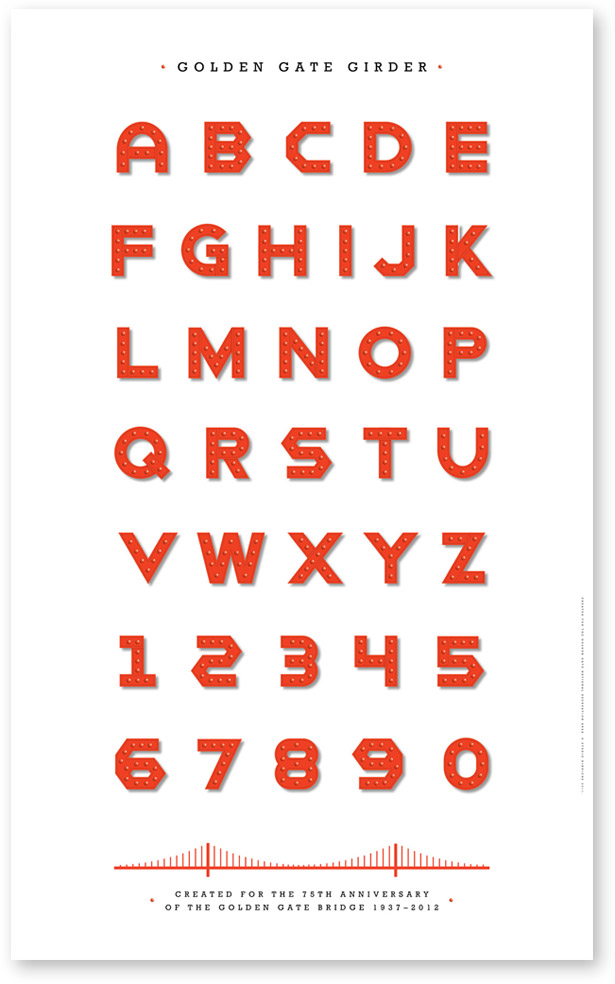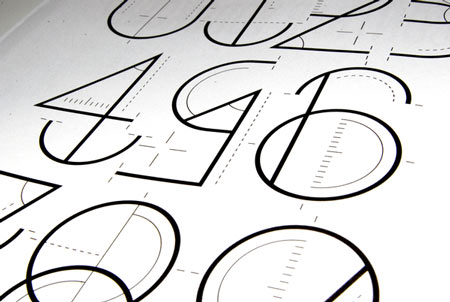Designing a Logo for a Beloved Icon:

Lately street banners with a logo of the Golden Gate Bridge have been popping up all over San Francisco to mark the 75th birthday of the city’s most beloved icon. Designed by Studio Hinrichs, the anniversary logo features the Bridge’s familiar vermillion red (aka International Orange) color, its soaring 746-foot-high tower and the Art Deco-styled sunburst border of the rivets that bolt the Bridge together. Applied to everything from signage to souvenir merchandise, the 75th anniversary logo was created to work in one-, two- and four- colors and remain crisp whether etched onto glass, cast in metal, or stitched on fabric. Along with the logo medallion, Kit designed a special Bridge typeface, called Golden Gate Girder, for a commemorative poster, single alphabet letter keychains and other uses.

Since the Bridge was conceived nearly a century ago, it has remained a marvel of engineering and style, as iconic to the West Coast as the Statue of Liberty to the East Coast. In 1937, consulting architect Irving Foster Morrow brought an Art Deco sensibility to what was then the world’s longest suspension bridge, giving it a sleek and elegant look with angular lines and gracefully curved cables that refracted the setting sun to dramatic rays of shadow and light. The vermillion red color was chosen to complement the landscape and stand out in the fog. But the results could have been much different had the Navy and Army had their way. In 1937, the U.S. Navy wanted to paint the towers in black and yellow stripes, arguing that “bumble bee stripes” would be more visible to ships in dense fog. The Army Air Corps thought the towers should be painted like a barbershop pole in red and white stripes. Thankfully, they were overruled by Morrow, who felt that the entire span should be all one color, and not clowned up like a bumble bee or barbershop pole. That’s how it has remained.
Year long festivities are planned to mark the 75th anniversary of the Golden Gate Bridge, and celebrations are just getting underway. Concerts, film series, lectures, and fireworks on San Francisco Bay are slated for the month of May. The one event that won’t be repeated from the 50th anniversary celebration is closing the Bridge to auto traffic, so pedestrians can walk across it, as they did at the real opening in 1937. At the 50th anniversary event in 1987, the arch in the roadway flattened under the weight of 300,000 reveling pedestrians, causing a human “traffic” jam to end all traffic jams.




























